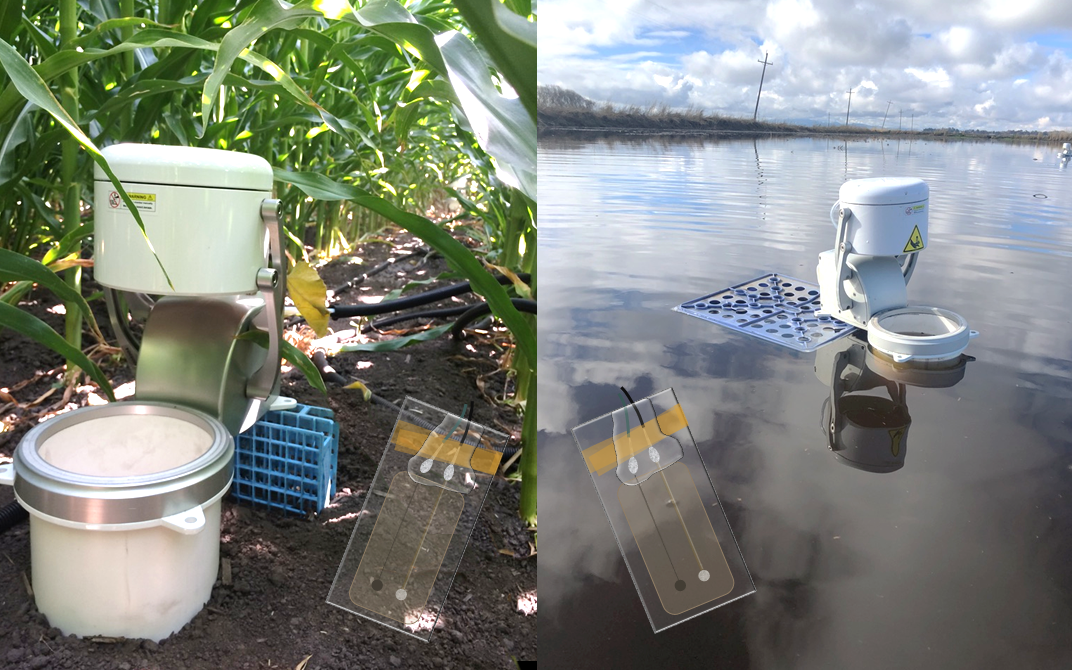Peatlands play a significant role in the Earth’s terrestrial carbon (C) cycle, accounting for approximately one-third of the global soil C reservoir. High C content and rapid N cycling, make peatlands ideal ecosystems to test controls on the magnitude and heterogeneity of soil nitrous oxide (N2O) and methane (CH4) emissions. Flood irrigation practices commonly employed in drained peatland agricultural areas likely impact these metrics.
Our previous research indicates that agricultural peatlands of the Sacramento-San Joaquin Delta in California are among the highest N2O emitting ecosystems on Earth, largely due to short-term “hot moments” that contribute up to 45% of annual N2O budgets. However, N2O and CH4 emissions are also characterized by hot spots, which are notoriously difficult to quantify due to the expense of instrumentation, and limited efficiency of manual sampling methods.
In collaboration with the Arias and Pister Labs in the UC Berkeley Department of Electrical Engineering and Computer Sciences and the BEEM lab at CU Boulder, the Silver lab is working to develop a suite of affordable, printable sensors to monitor soil nitrate (NO3–), ammonium (NH4+), and oxygen (O2) availability as well as pH, temperature and moisture, in real time. These sensors, paired with an extensive network of automated soil flux chambers, have the potential to increase our data yield by orders of magnitude across space and time, allowing us to determine the effect of the aforementioned variables on N2O and CH4 emissions.
High-frequency and high-density measurements can be incorporated into machine learning models to predict ecosystem-scale N2O and CH4 emissions and determine their associated drivers. These insights will inform proper soil N management and climate friendly agricultural practices to lower greenhouse gas emissions from drained peatlands.
